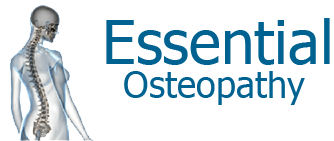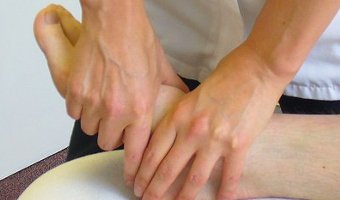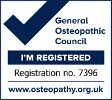Forward Head Posture
Many of my patients present to me with a ‘forward head posture’. As it suggests, this scenario develops over quite a long time where, instead of the ears being positioned above the shoulders as the person is standing, their head has drifted forwards. This strains the muscles of the neck and shoulders but also adds tension down the muscular chains into the mid and low back leading to joint problems and chronic muscular discomfort. Because the body is limited in mobility with the chin jutting forward and the rib cage in a hunched position, the diaphragm is less effective which reduces oxygenation and impairs functionality of the digestive system. This can lead to problems such as fatigue, headaches, poor concentration and immobility.
The forward head posture can be aggravated by the following:
- sitting at desks – particularly when working on a computer or studying for long periods of time without a break
- imbalanced training regimes – where the person focuses on building muscles on the front of the body and forgets to balance it with work on the back muscles
- low mood – we all slump when we’re feeling flat or low
What can you do to change a forward head posture whether you are standing or sitting?
- Stick your chest out – not a nice analogy, but imagine that you have a fish hook in your breastbone with the fishing line pulling diagonally up towards the ceiling. Your shoulders will automatically roll back a little into a better position. For ladies with large breasts, make sure you find good supportive bras with wide straps and backs. You will find it harder to maintain this position as the breast tissue does pull the shoulders forward and the sternum down.
- Lengthen the back of your neck – imagine a piece of string pulling from the back of the top of the head up towards the ceiling and lift the head so that you feel taller and longer at the back of the neck. Every 4 cm your head shifts forwards from that plumb line position of being over your shoulders, the neck muscles are loaded by 2 times so it’s really important to think about alignment of the head.
- Tuck your chin down and back – think of the funky chicken dance of old. Just do the bit where the chin is taken back towards your neck (don’t bother with sticking the chin forward)! Keep your eyes looking forward so that you don’t end up bending your neck and looking down as you take your chin back. The back of your neck should stay long.
Focus on the following while your are sitting at your desk:
- position your screen (if you are using one) so that the top of it is aligned with your eyebrows. If you’re using a laptop, buy a bluetooth keyboard and mouse and put it onto books or a stand to enable you to have the screen as explained
- don’t cross your legs as it causes misalignment of the hips which can result in problems elsewhere in the back
- regularly stretch your arms out and clasp your hands together. Reach up towards the ceiling and in front of you if you space. Gently release out your neck by taking the head from side to side and roll your shoulders forwards and back.
- Use a phone headset if you’re on the phone often
- Make sure you have a good chair – the best investment
- Check your posture at all times – keeping your head above your shoulders at all times as described above
Focus on the following while standing:
- keep your weight evenly distributed on your feet – you’ll feel like you’re leaning forward but you’re not
- Ideally using a mirror, align your ears, shoulders, hips and ankles in a straight line (like a plumb line). Don’t worry if your spine and other body areas create curves away from this line.
- Make sure that your upper body sits squarely on your hip and your pelvis is tucked beneath you to ensure that you don’t overarch your back.
- Try to stand as tall as you can imagining you have a book balanced on your head (old fashioned but it works)
It’s worth getting these few points right so, if you have any questions, please get in touch. Treatment can also help reduce the muscle tension, chronic connective tissue shortening and joint restriction as appropriate to enable to self-help approach to work.







